
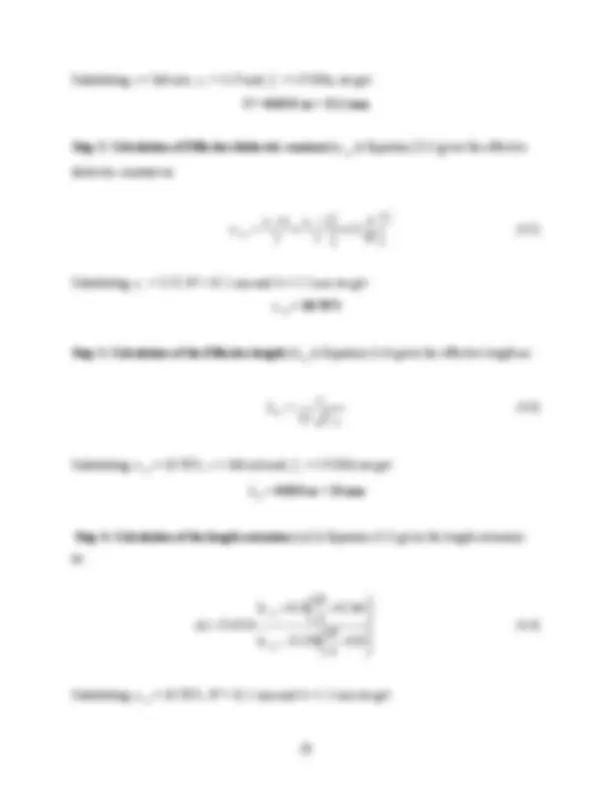
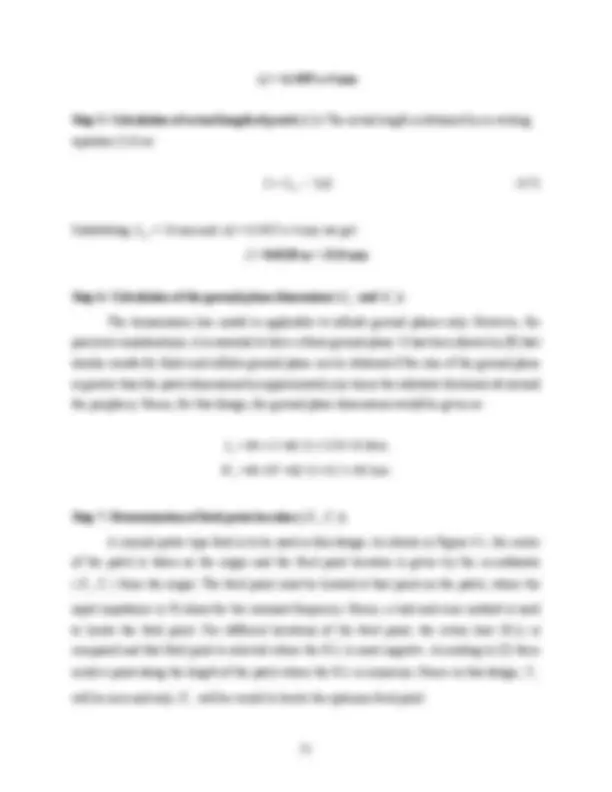
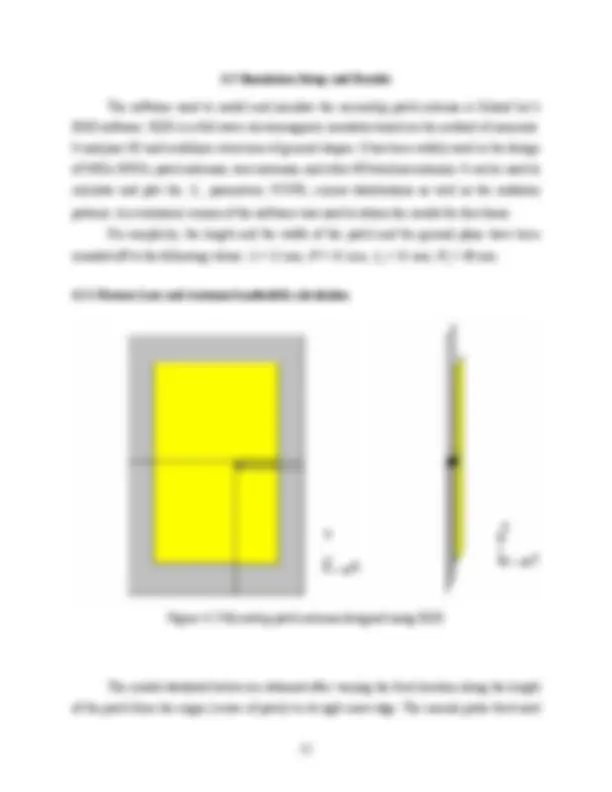
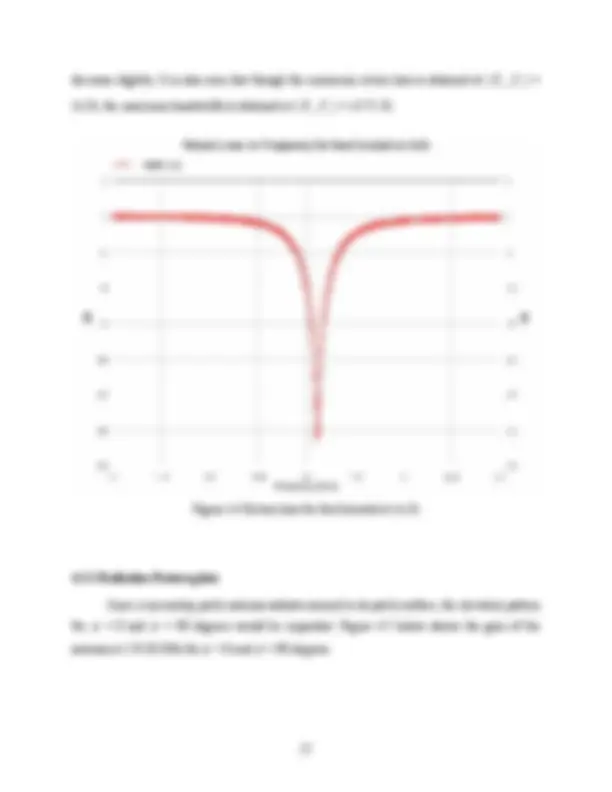
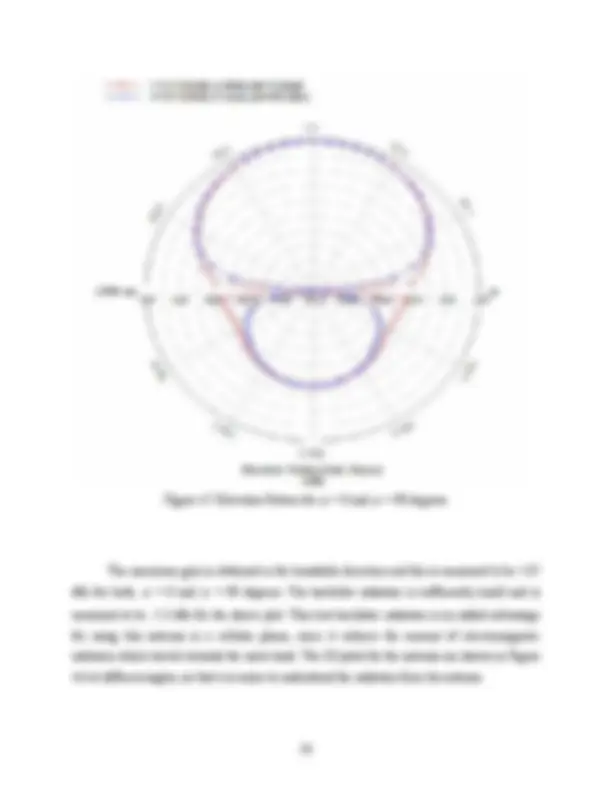
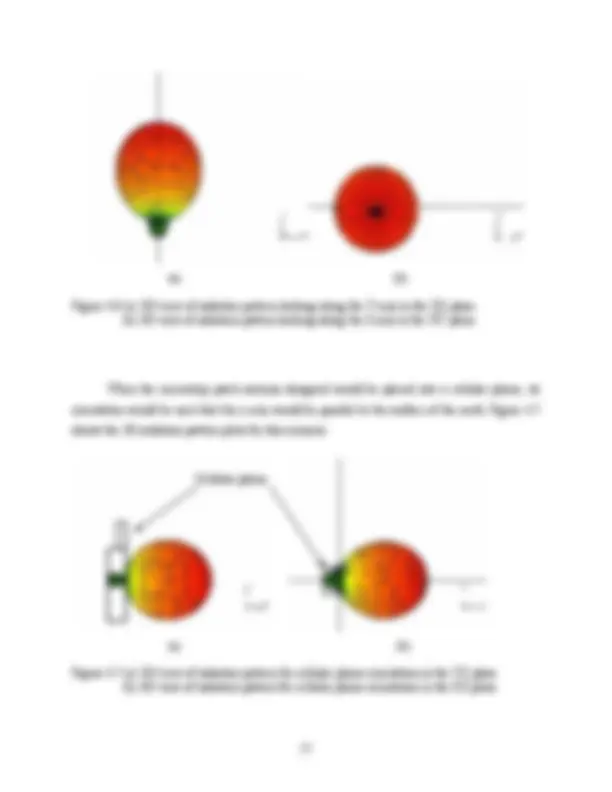


Study with the several resources on Docsity

Earn points by helping other students or get them with a premium plan


Prepare for your exams
Study with the several resources on Docsity

Earn points to download
Earn points by helping other students or get them with a premium plan
Community
Ask the community for help and clear up your study doubts
Discover the best universities in your country according to Docsity users
Free resources
Download our free guides on studying techniques, anxiety management strategies, and thesis advice from Docsity tutors
Antenna and propagation
Typology: Thesis
1 / 11

This page cannot be seen from the preview
Don't miss anything!







In this chapter, the procedure for designing a rectangular microstrip patch antenna is explained. Next, a compact rectangular microstrip patch antenna is designed for use in cellular phones. Finally, the results obtained from the simulations are demonstrated.
4.1 Design Specifications The three essential parameters for the design of a rectangular Microstrip Patch Antenna are:
Hence, the essential parameters for the design are:
4.2 Design Procedure
Figure 4.1 Top view of Microstrip Patch Antenna
The transmission line model described in chapter 3 will be used to design the antenna. Step 1: Calculation of the Width ( W ): The width of the Microstrip patch antenna is given by equation (3.6) as:
fo^ r
W c
L g
W
( Xf , Yf )
Wg
Feed Point
Patch
Ground Plane
∆ L = 6.3455 e-4 mm
Step 5: Calculation of actual length of patch ( L ): The actual length is obtained by re-writing equation (3.3) as:
L = Leff − 2 ∆ L (4.5)
Substituting Leff = 24 mm and ∆ L = 6.3455 e-4 mm we get:
L = 0.0228 m = 22.8 mm
Step 6: Calculation of the ground plane dimensions ( Lg and W (^) g ):
The transmission line model is applicable to infinite ground planes only. However, for practical considerations, it is essential to have a finite ground plane. It has been shown by [9] that similar results for finite and infinite ground plane can be obtained if the size of the ground plane is greater than the patch dimensions by approximately six times the substrate thickness all around the periphery. Hence, for this design, the ground plane dimensions would be given as:
L (^) g = 6 h + L = 6 ( 1. 5 )+ 22. 8 = 31. 8 mm W (^) g = 6 h + W = 6 ( 1. 5 )+ 31. 1 = 40. 1 mm
Step 7: Determination of feed point location ( X (^) f , Yf ):
A coaxial probe type feed is to be used in this design. As shown in Figure 4.1, the center of the patch is taken as the origin and the feed point location is given by the co-ordinates ( X (^) f , Yf ) from the origin. The feed point must be located at that point on the patch, where the
input impedance is 50 ohms for the resonant frequency. Hence, a trial and error method is used to locate the feed point. For different locations of the feed point, the return loss (R.L) is compared and that feed point is selected where the R.L is most negative. According to [5] there exists a point along the length of the patch where the R.L is minimum. Hence in this design, Yf
will be zero and only X (^) f will be varied to locate the optimum feed point.
4.3 Simulation Setup and Results The software used to model and simulate the microstrip patch antenna is Zeland Inc’s IE3D software. IE3D is a full-wave electromagnetic simulator based on the method of moments. It analyzes 3D and multilayer structures of general shapes. It has been widely used in the design of MICs, RFICs, patch antennas, wire antennas, and other RF/wireless antennas. It can be used to calculate and plot the S 11 parameters, VSWR, current distributions as well as the radiation
patterns. An evaluation version of the software was used to obtain the results for this thesis. For simplicity, the length and the width of the patch and the ground plane have been rounded off to the following values: L = 22 mm, W = 31 mm, Lg = 31 mm, Wg = 40 mm.
4.3.1 Return Loss and Antenna bandwidth calculation
Figure 4.2 Microstrip patch antenna designed using IE3D
The results tabulated below are obtained after varying the feed location along the length of the patch from the origin (center of patch) to its right most edge. The coaxial probe feed used
Figure 4.3 below shows the return loss plots for some of the feed point locations.
Figure 4.3 Return loss for feed located at different locations
The center frequency is selected as the one at which the return loss is minimum. As described in chapter 2, the bandwidth can be calculated from the return loss (RL) plot. The bandwidth of the antenna can be said to be those range of frequencies over which the RL is greater than -9.5 dB (-9.5 dB corresponds to a VSWR of 2 which is an acceptable figure). From table 4.1, the optimum feed point is found to be at ( X (^) f , Yf ) = (4, 0) where a RL of -31.3585 dB
is obtained. The bandwidth of the antenna for this feed point location is calculated (as shown below in Figure 4.4) to be 23.28 MHz and a center frequency of 1.9120 GHz is obtained which is very close to the desired design frequency of 1.9 GHz. It is observed from the table that, as the feed point location is moved away from the center of the patch, the center frequency starts to
decrease slightly. It is also seen that though the maximum return loss is obtained at ( X (^) f , Y (^) f ) =
(4, 0), the maximum bandwidth is obtained at ( X (^) f , Yf ) = (4.75, 0).
Figure 4.4 Return loss for feed located at (4, 0)
4.3.2 Radiation Pattern plots
Since a microstrip patch antenna radiates normal to its patch surface, the elevation pattern for φ = 0 and φ = 90 degrees would be important. Figure 4.5 below shows the gain of the
antenna at 1.9120 GHz for φ = 0 and φ = 90 degrees.
(a) (b)
Figure 4.6 (a) 3D view of radiation pattern looking along the Y axis in the XZ plane (b) 3D view of radiation pattern looking along the Z axis in the XY plane
When the microstrip patch antenna designed would be placed into a cellular phone, its orientation would be such that the z axis would be parallel to the surface of the earth. Figure 4. shows the 3D radiation pattern plots for this scenario.
(a) (b)
Figure 4.7 (a) 3D view of radiation pattern for cellular phone orientation in the YZ plane (b) 3D view of radiation pattern for cellular phone orientation in the XZ plane
Cellular phone
4.3.3 Other calculated parameters
Some of the other calculated parameters, such as the gain, directivity, antenna efficiency and 3 dB beamwidth for the antenna at 1.912 GHz are given below.